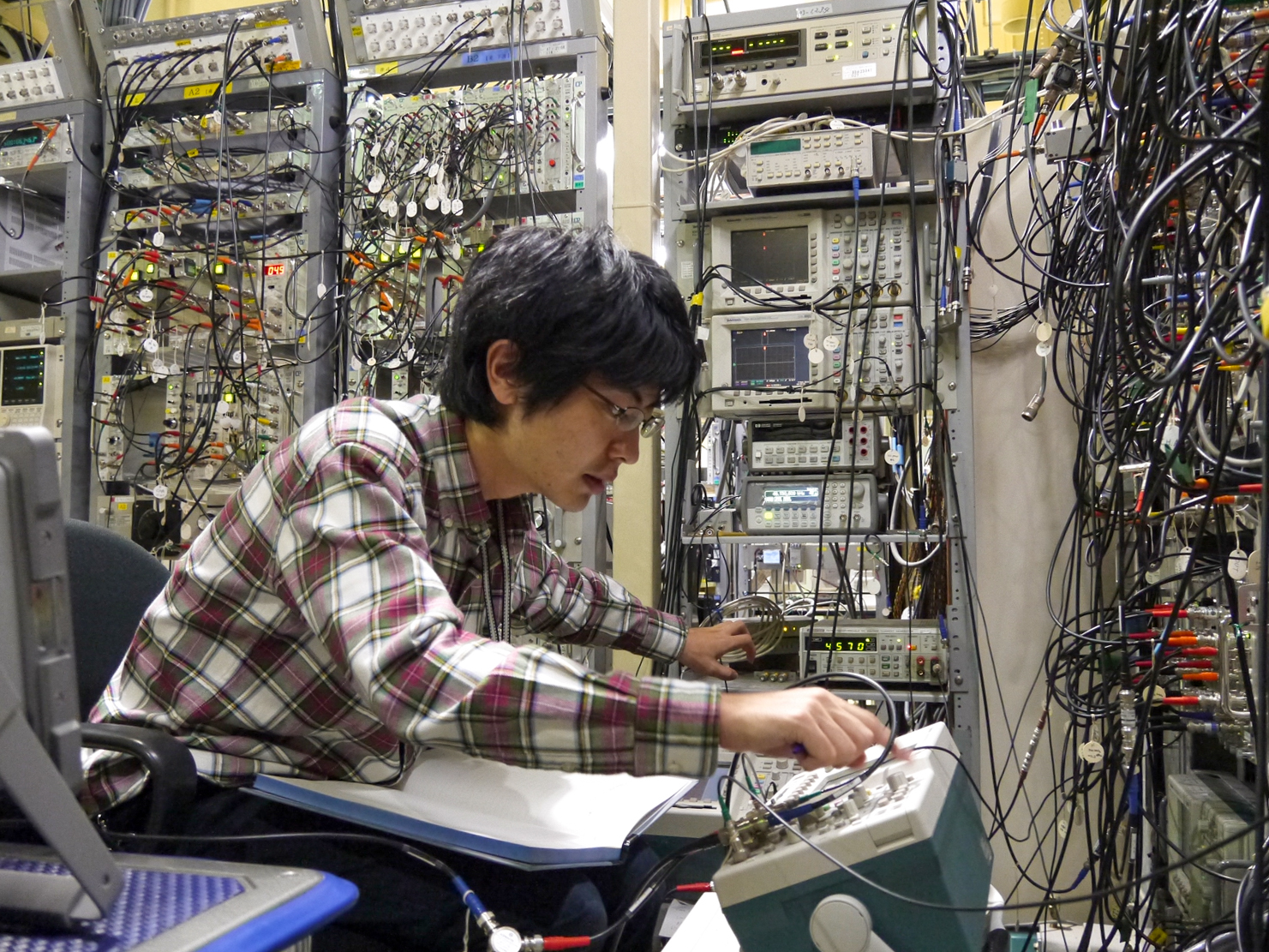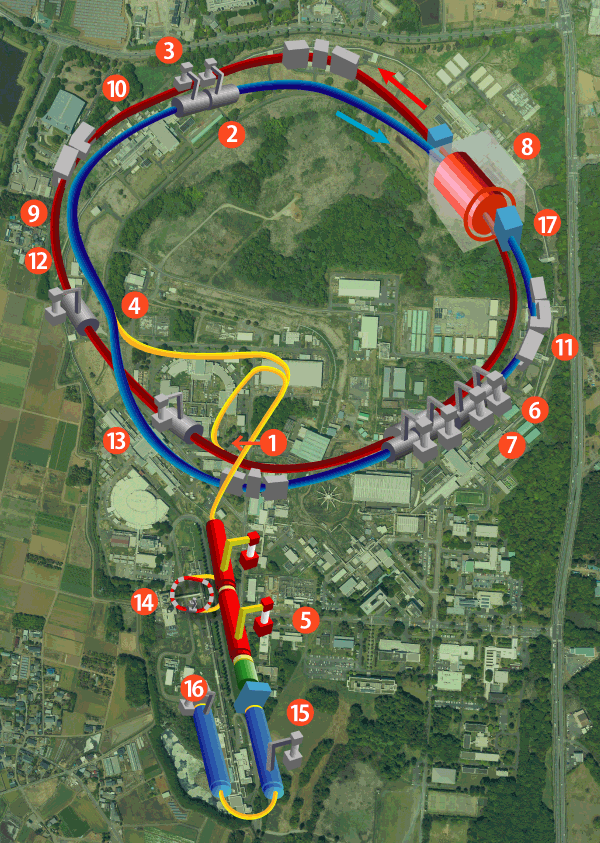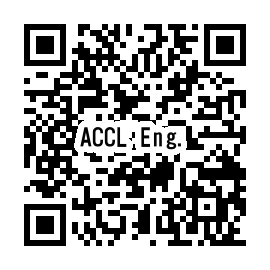SOKENDAI student’s paper was selected as Editors’ suggestion in Physical Review Accelerators and Beams! – Machine study revealed beam oscillations not predicted by the theory –
![]() Accelerator Laboratory of KEK accepts graduate students majoring in accelerator science at the Graduate University for Advanced Studies (SOKENDAI) and provides them with research guidance toward their degrees. An outstanding achievement conducted by one of such students is presented in this article.
Accelerator Laboratory of KEK accepts graduate students majoring in accelerator science at the Graduate University for Advanced Studies (SOKENDAI) and provides them with research guidance toward their degrees. An outstanding achievement conducted by one of such students is presented in this article.
In a variety of accelerators at KEK, we conduct machine studies to improve their performance and to study the properties and behavior of the beams running in accelerators. Some of these machine studies are allocated to the research conducted by graduate students. Machine studies using real beams can lead to the discovery of new phenomena that no one has ever seen before. Therefore, machine studies provide an opportunity of exciting scientific adventure. When we find a new phenomenon, we analyze and study it in detail, and then, submit a paper to a scientific journal.
Takaaki Yamaguchi was one of the graduate students who entered SOKENDAI in 2018. He decided to major in a field related to accelerating beams and began studying accelerator science and radio frequency acceleration. In addition to reading textbooks and papers, he deepened his knowledge through active discussions among his research group. During these studies, Yamaguchi interested in a phenomenon known as the static Robinson instability. When the beam intensity is increased in circular accelerators, the beam cannot be accelerated stably. This phenomenon was predicted by K.W. Robinson 60 years ago and is now considered to be established theoretically. However, Yamaguchi was very curious to know whether this phenomenon occurs in an actual accelerator just as formulated in published papers.
Then, Yamaguchi and his advisors suggested to conduct their machine study at the Photon Factory (PF) electron storage ring at KEK. The PF ring is usually operated for users of synchrotron radiation. Fortunately, Yamaguchi was granted his time for machine study among valuable operation periods.
Figure 1 shows a picture of Yamaguchi conducting his machine study at the PF ring. We can see that he was seriously working on the experiment surrounding by many electronics. In this machine study, Yamaguchi confirmed that the static Robinson instability actually occurred when the beam intensity is increased. By setting up a unique equipment, Yamaguchi also succeeded in observing the process of beam instability (Fig. 2).

Figure 1: Machine study being conducted by Takaaki Yamaguchi at the Photon Factory storage ring.
![Figure 2: Waveforms that indicate the beam becoming unstable (reproduced from [Ref.])](../wp-content/uploads/20230407_2.png)
Figure 2: Waveforms that indicate the beam becoming unstable (reproduced from [Ref.])
In another machine study conducted on a different day, Yamaguchi measured the frequency at which the beam oscillates in the direction of beam motion (in a technical term, the coherent synchrotron frequency) at various beam intensities and accelerating voltages. He then compared these data with what was predicted by the theory. As a result, Yamaguchi discovered beam oscillations that were not predicted by the theory. The unpredicted beam oscillations were observed just before the beam became unstable. Figure 3 shows such unpredicted oscillations where the sharp peaks indicated by an arrow corresponds to the unexpected beam oscillations.
![Figure 3: Measured beam-oscillation frequencies in the direction of beam movement. The sharp peaks indicated by the arrow indicate new beam oscillations that cannot be explained by conventional theory (Figure processed and reproduced from [Ref.])](../wp-content/uploads/20230407__3.png)
Figure 3: Measured beam-oscillation frequencies in the direction of beam movement. The sharp peaks indicated by the arrow indicate new beam oscillations that cannot be explained by conventional theory (Figure processed and reproduced from [Ref.])
Even if we think that we have found a new phenomenon, it may be something trivial, such as due to some measurement problems. Then, Yamaguchi further investigated this phenomenon in collaboration with other staff. He also discussed the results with his advisors and other staff. As a result, they have reached the conclusion that the sharp peaks shown in Fig. 3 indicate beam oscillations that cannot be explained by conventional theories.
Subsequently, Yamaguchi compiled these research results into a paper in collaboration with his advisors and other staff, and submitted it to Physical Review Accelerators and Beams, a leading journal in the accelerator field. This paper was peer-reviewed and published in April 2023 [Ref.]. To his delight, the paper was also selected for the journal’s Editors’ suggestion, a distinct article the editors recommend. This would be due to the fact that the paper reported a new phenomenon in the field that was thought to be established. Such a new knowledge gained from the fundamental accelerator research is very useful for improving accelerators’ performance or for constructing cutting-edge new accelerators.
As was shown in this example, the accelerator science offers many opportunities to conduct exciting experiments with real beams. Students are encouraged to consider majoring in accelerator science (*). Mr. Yamaguchi, introduced here, received his doctoral degree this past March and took his first step as an accelerator scientist at KEK in April 2023.
The research paper introduced here is available on the following website:
https://link.aps.org/doi/10.1103/PhysRevAccelBeams.26.044401
(*) If you are interested in Accelerator Science Course of SOKENDAI, please contact the course director: Takuya Kamitani < takuya.kamitani@kek.jp > or the Graduate Education Section of KEK < kyodo2@mail.kek.jp >
[Ref.] Takaaki Yamaguchi, Shogo Sakanaka, Naoto Yamamoto, Daichi Naito, and Takeshi Takahashi, “Systematic study on the static Robinson instability in an electron storage ring”, Physical Review Accelerators and Beams 26, 044401 (2023).
– Written by Shogo Sakanaka, Accelerator Laboratory, KEK –


